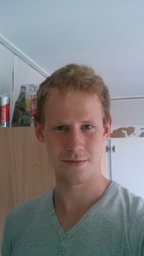
Biography
In 2007 Jan Hendriks started his study Biomedical Engineering at the University of Twente. Three years later he finished his Bachelor with an assignment on the improvement of DNA transfection with interacting poly-amido-amines at the controlled drug delivery group. In 2010 he started his master in the direction of Molecular, Cellular and tissue Engineering. In 2012 he performed a case study for the Medical Cell Biophysics group on the quantification of the metastatic cascade preceding his study tour to Malaysia and Singapore. For his internship he worked with the group of John Hunt at the University of Liverpool in collaboration with the Developmental BioEngineering group at the University of Twente. Here an in vivo study was performed on enzymatically crosslinkable hydrogels for the application in adipose tissue engineering. In his master thesis the angiogenic properties of the same hydrogels were improved and the application for cell-spray skin tissue engineering was evaluated. In 2013 he graduated on this topic at the group of Marcel Karperien, where he started his PhD in 2014.
Project Description
Osteoarthritis is a debilitating disease affecting millions worldwide. The disease has many phenotypes, but a strong risk factor is a history of trauma in the affected joint. Early stage monitoring and treatment of these patients might be able to slow of avoid the development of this disease. However no minimal-invasive technique is currently available that is capable of diagnosing this early stage.
When the joint is affected the homeostasis of the tissue will change. This leads to an altered metabolism and possible inflammation. The synovial fluid is in contact with all joint tissues and has an important messenger function. It is therefore likely that changes in joint homeostasis leads to altered marker concentrations in this fluid. With a needle small volumes can be extracted minimal invasively. The subsequent analysis of the marker concentration is a potentially powerful tool for early stage diagnosis and prognosis.
The goals of this project are two-fold. First a sensitive lab-on-chip based system will be developed with which a large array of markers can be detected sensitively and selectively in trace concentrations at low costs. When a reliable system has been developed and validated, the second phase of the project will start. Here a database of marker profiles of healthy and diseased synovial fluid will be created as a benchmarking tool. Patient profiles can be compared with this benchmark for diagnosis, prognosis and potentially even treatment.
